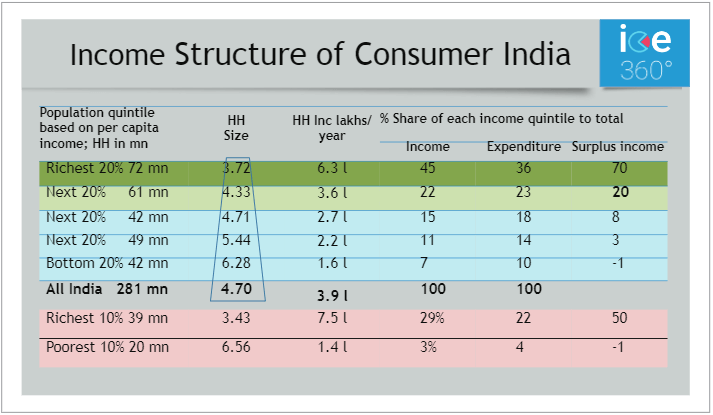View cart “Income Structure of Consumer India” has been added to your cart.
Income Structure of Consumer India
DownloadMacro-Consumer Insight and Citizen Centred Policy is the Focus of All The Data That We CollectFROM HOUSEHOLD INCOME DATA

Methodology
- The table on the left is based on ICE 360° survey as measured in 2016.
- Households are arranged in order of measured per capital income and divided into income slabs of equal population size, ranging from the richest 10% number of households to the poorest 10% number of households.
- The percentage of Indian household income sitting in each pool is measured, and that percentage is then applied to the total disposable income number put out by the Government (CSO) and “adjusted income” per household is derived.
- Surplus income is the income left after all expenses has been met.
Insights from this data include
- Decreasing family size with income increase (giving premium consumption a boost).
- Precise share of mass and class market potential.
- Indian households are not as rich as we think they are nor as poor as we think they are.
- Given the skewed distribution of income surplus, demand for premium products and discretionary goods is less prone to most economic shocks.
Copyrights @2021 | Designed & Developed by Rage Communications Pvt.Ltd.